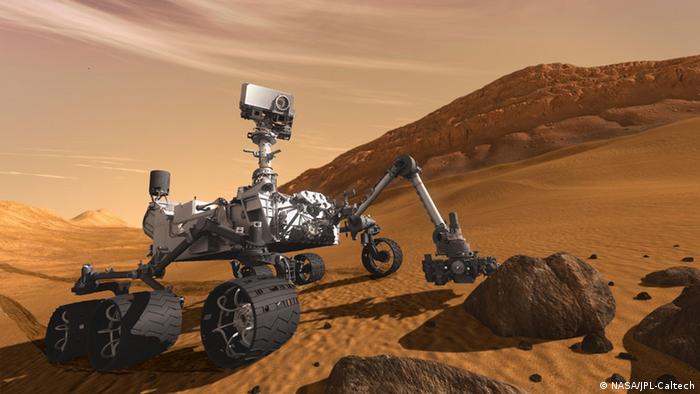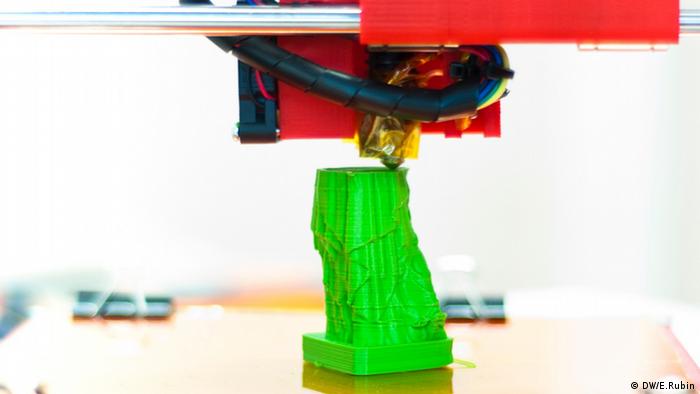This year’s breakthroughs took us to the surface of Mars and the lowest spot on Earth. And the discovery of the fundamental element, the elusive Higgs boson, was arguably one of the greatest in science.
Every year seems bring a torrent of new records, discoveries, gizmos and developments that surprise and inspire. And 2012 was no exception.
The European Organization for Nuclear Research (CERN) announced that its scientists had "reached into the fabric of the universe" with the discovery of the existence of the Higgs boson. It is arguably one of the greatest discoveries of our time.
In 1964, British physicist Peter Higgs proposed the existence of a sub-atomic particle that could explain how matter attains its mass. But it took scientists nearly 50 years to prove the now retired University of Edinburgh professor right.
And while CERN scientists looked deep into the Earth for the fundamental element, NASA’s Hubble Telescope captured galaxies some 13.2 billion light years away. However, the Hubble eXtreme Deep Field sighting is still awaiting confirmation as a galaxy.
 Nasa's rover, Curiosity, beamed images from Mars during its landing on the planet in August
Nasa's rover, Curiosity, beamed images from Mars during its landing on the planet in August
New records from space and the ocean
Despite this, NASA can bask in an even bigger success in 2012. Its 2,000 pound, plutonium-powered rover, Curiosity, landed safely on the surface of Mars. Ever since, Curiosity has been providing startling images and analysis of the Martian surface and atmosphere. But it is yet to find organic molecules that would prove that there was once life on Mars.
Even though, we are yet to land humans on the Red Planet, Austrian daredevil Felix Baumgartner captured the headlines when he plummeted from the edge of space to the surface of the Earth. In a four minute and twenty second freefall, he became the first person to break the speed of sound without the aid of a supersonic jet or space shuttle.
Another plunge also made headline a few months earlier. Titanic film director James Cameron became the first person to dive into the deepest spot on the planet – the bottom of the Marina Trench. It's almost 11 kilometers below the surface of the Pacific Ocean.
 A 3D printer lays plastic, ceramics, metal, and even cookie dough in layers to "print" objects
A 3D printer lays plastic, ceramics, metal, and even cookie dough in layers to "print" objects
Plenty of Apple
Beyond ocean and space exploration, there was plenty of innovation.
More people are now "printing" their own solid objects using 3D printers that can cost as little as 250 euros ($320). The printers take digital input from three-dimensional data and create solid, three-dimensional parts through an additive, layer-by-layer process. 3D printing is expected to go mainstream in 2013.
And while 3D was taking on among early adopters of technology, Apple continued to appeal to the masses a year after the death of its co-founder Steve Jobs. In August, it became the most valuable company in US history when its market capitalization reached $623.1 billion at one point in trading.
Apple's latest products, the iPad 3 and iPhone 5, arrived amid growing competition in the tablet PC and smartphone markets from the likes of Google, Sony, and HTC. Software maker Microsoft released the Windows 8 operating system. It is designed to work seamlessly across multiple devices, including smartphones, tablet PCs and desktop computers.
 Gene therapy modifies the DNA of a person to treat a disease
Gene therapy modifies the DNA of a person to treat a disease
Innovative and quirky solutions
In November, the European Commission approved gene therapy uniQure's Glybera, which can treat people suffering from lipoprotein lipase deficiency by modifying their DNA. It will be commercially available from late 2012, making it the gene therapy on European market.
Meanwhile, an attempt to reduce malaria wasn't advanced or complex. Millions of sterile male mosquitoes were released, and the population of the insect dropped by 80 percent.
In the future, people suffering from high blood pressure may not need to be treated with drugs. Scientists developed a catheter-based renal denervation – a 40-minute procedure that involves using a tiny probe through the blood vessels to zap nerves in the kidney with low-power radio waves.
Saying goodbye
Just like any year, both well-known and less known pioneers in science and technology died: American Eugene Polley was the inventor of the remote control, Egyptian-born French Roland Moreno invented smart card technology used in phone and bank card, N. Joseph Woodland, a co-inventor of the barcode, and Andrew Huxely discovered how nerves generate electrical impulses that control muscles.
Neil Armstrong, the first man to set foot on the moon, also died in 2012.
Comments